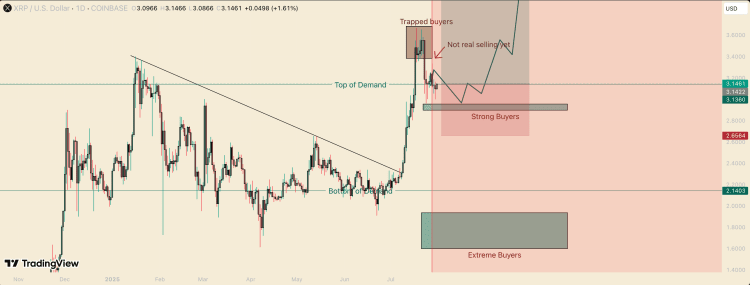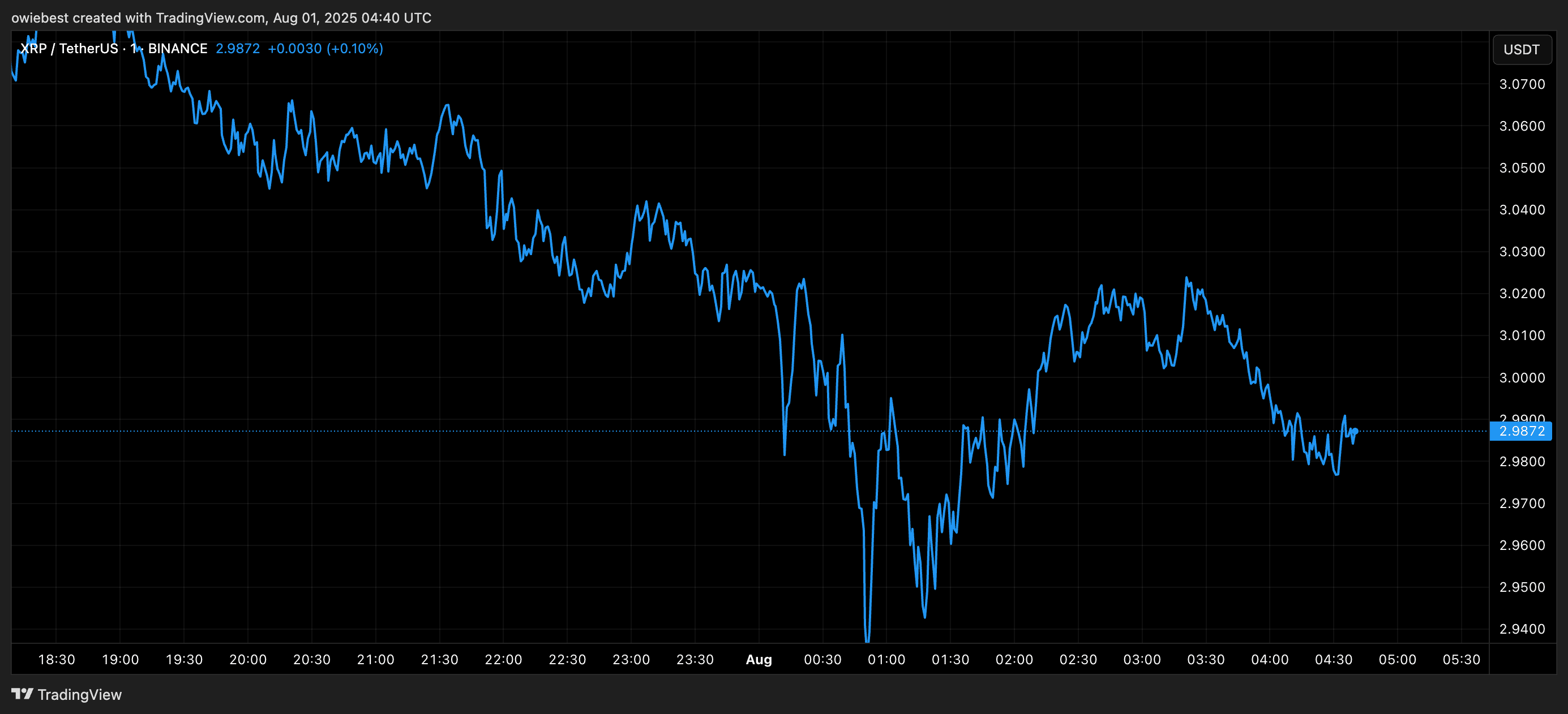Driven by strong buying interest, the XRP price once surged to a 7-year high but then retreated, seeking new support levels. This trend is driven by widespread bearish sentiment, which has plagued the market as Bitcoin price struggles to return to its historical high, once again putting altcoins at risk. The XRP price itself faces unique resistance, especially in terms of buying, which may trigger a new round of declines.
Future trends of XRP price
Cryptocurrency analyst Thecafetrader highlighted the possible trends after the XRP price decline. These trends include bullish and bearish, depending on buyers and their level of importance on their positions during this period.
Analysts first pointed out that the increase in XRP price is driven by a large number of buyers. These buy orders had triggered XRP to break through the 2024 high, but faced resistance from sellers again. This indicates that bulls are trapped at high price levels. However, this is not the most concerning development.
One point noted by the analysts is that although XRP has repeatedly set new highs this year, trading volume has significantly decreased. For example, when XRP's price first broke the $3 mark in 2024, the daily trading volume peaked at over $78 billion. However, as the XRP price broke $3.6, its highest daily trading volume was only $41 billion. This shows a significant decline in buying interest, especially as the price drop affects the willingness to buy.

Interestingly, it seems that not only buyers are abandoning the XRP altcoin. According to analysts, there are currently no 'real' sellers entering the market. Therefore, XRP still has the potential to rise to a bullish momentum of $4.64.
Turning to a more pessimistic side, the analyst explained that XRP price indeed needs strong buyers' intervention to maintain the upward trend. If these buyers fail to hold their ground, then the XRP price may indeed retreat from the initial $2.95 level.
Cryptocurrency analysts initially set the target price for this decline at $3.13. However, the more the price struggles, the lower the target price becomes. Next is the $2.95 area, followed by $2.15-$2.3, which analysts refer to as the 'suitable entry price point.' Finally, the $1.60-$1.93 range is also important, which analysts call the 'cheap price point.'
